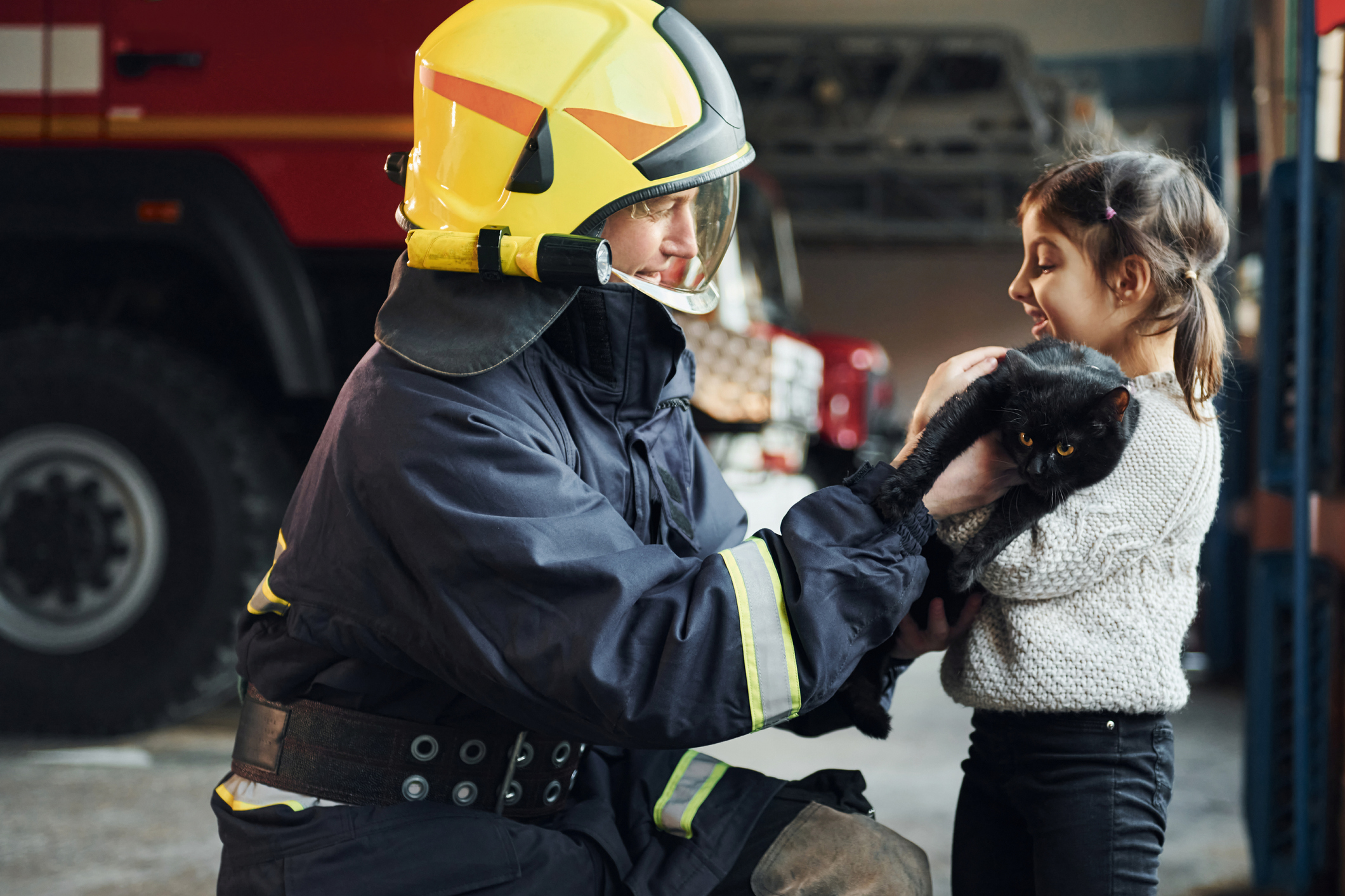What To Do With Pets In Case of A Fire
Doctor of Veterinary Medicine

While efforts are made to answer all questions as quickly as possible, if an immediate answer is required or if your pet is in need of urgent or emergency care, contact your pet's veterinarian immediately.
Doctor of Veterinary Medicine

You will receive an answer from Dr. Lindsay and our vet/tech team as soon as possible, usually the same day.
All answers are provided for informational or educational purposes only, and are intended to be a supplement to, and not a substitute for, the expertise and professional judgment of your pet's veterinarian.
It may be necessary to consult your pet's veterinarian regarding the applicability of any opinions or recommendations with respect to your pet's symptoms or medical condition.
CloseDoctor of Veterinary Medicine

An error has occurred, please reload the page and try again.
CloseWhile efforts are made to answer all questions as quickly as possible, if an immediate answer is required or if your pet is in need of urgent or emergency care, contact your pet's veterinarian immediately.
There is no answer related to your question

Would you know what to do if your pet was in your home during a fire? According to the American Veterinary Medical Association (AVMA), around 500,000 dogs and cats are affected by residential fires each year. The AVMA also states that, unfortunately, about 40,000 of those pets do not survive.
In honor of National Pet Fire Safety Day, learn what you can do to help ensure your pet will make it out to safety in the event of a fire.
Include Pets In Your Family Fire Safety Plan
A fire can start in a home overnight, while you’re at work, or while you’re at home during the day. It’s crucial to have a family fire safety plan that includes different scenarios to ensure that you will be calm and prepared in the event of a fire.
Smoke inhalation can kill people and pets in less than twenty minutes. By having a plan, you’ll save time and greatly increase your chances of getting your family members - both two-legged and four-legged - out alive.
Make note of all of the exits in your home and make sure these escape routes are never blocked by furniture or clutter. Anything that you may need to grab on the way out - which should include very little - should be within easy reach at all times.
Keep Pet Gear Near Exits
During a house fire, every minute counts. There’s no time to search for your cat’s carrier or look for your dog’s leash. If you’re home during a fire, you’ll need to be able to grab your pet and get out. Keep an extra carrier and/or leash and collar or harness near your home’s main exit, and consider storing another set of gear close to a window or other fire escape route.
Keep in mind that there may not be time to fiddle with a leash or carrier. You may need to get out as quickly as you can and hope your pet follows you.
Practice Your Pet’s Life-Saving Recall
In the event that you’re unable to leash your pet or place them in a carrier, their ability to come when you call them could save their life. Pets tend to become fearful and retreat to hiding spots in emergency situations. By training your pet to come when called, and practicing this skill often, you can greatly increase your chances that your pet will trust you and follow you to safety.
Use Pet Fire Safety Signage
You can place “Rescue Our Pets” signs on windows and doors to let emergency responders know that you have pets in your home that may need to be rescued. Firefighters must prioritize human lives first, but if they are able to look for your pets, there is a chance that they will be able to safely recover them.
To Crate or Not To Crate?
Some pet parents are concerned that keeping their pet in a dog crate or cage when they’re not home could be a fire safety risk. However, keeping your pet properly contained could actually reduce their risk of being in a house fire. According to the National Fire Protection Association, nearly 1000 house fires per year are started by pets.
Unattended, unsupervised pets can chew electrical wires, turn oven knobs, and knock over candles, potentially starting a fire. Keeping your pet in a crate or a pet-proofed room greatly reduces their chances of getting into danger.
That said, where you place your pet matters. If possible, place their crate close to an exit so they can be let out as quickly as possible in the event of a fire.
Check Off Your Annual Pet Fire Safety Checklist
It’s easy to let fire safety fall to the back burner, especially if you’ve made safety plans once before. But fire safety isn’t a “one and done” task. National Pet Fire Safety Day is the perfect time to create an annual plan and check it off each year.
- If you’ve moved or lost or adopted a pet, update the “rescue our pets” sticker.
- Test all fire alarms
- Recharge or replace fire extinguishers
- Practice fire drills to ensure your plan is ready for action
- Check home for fire hazards like chewed electrical cords, oven knobs that pets can reach, and glass water bowls that can magnify the sun’s rays and start a fire
VISION
Every pet deserves to live a long, happy, healthy life.
 Swipe
Swipe



















